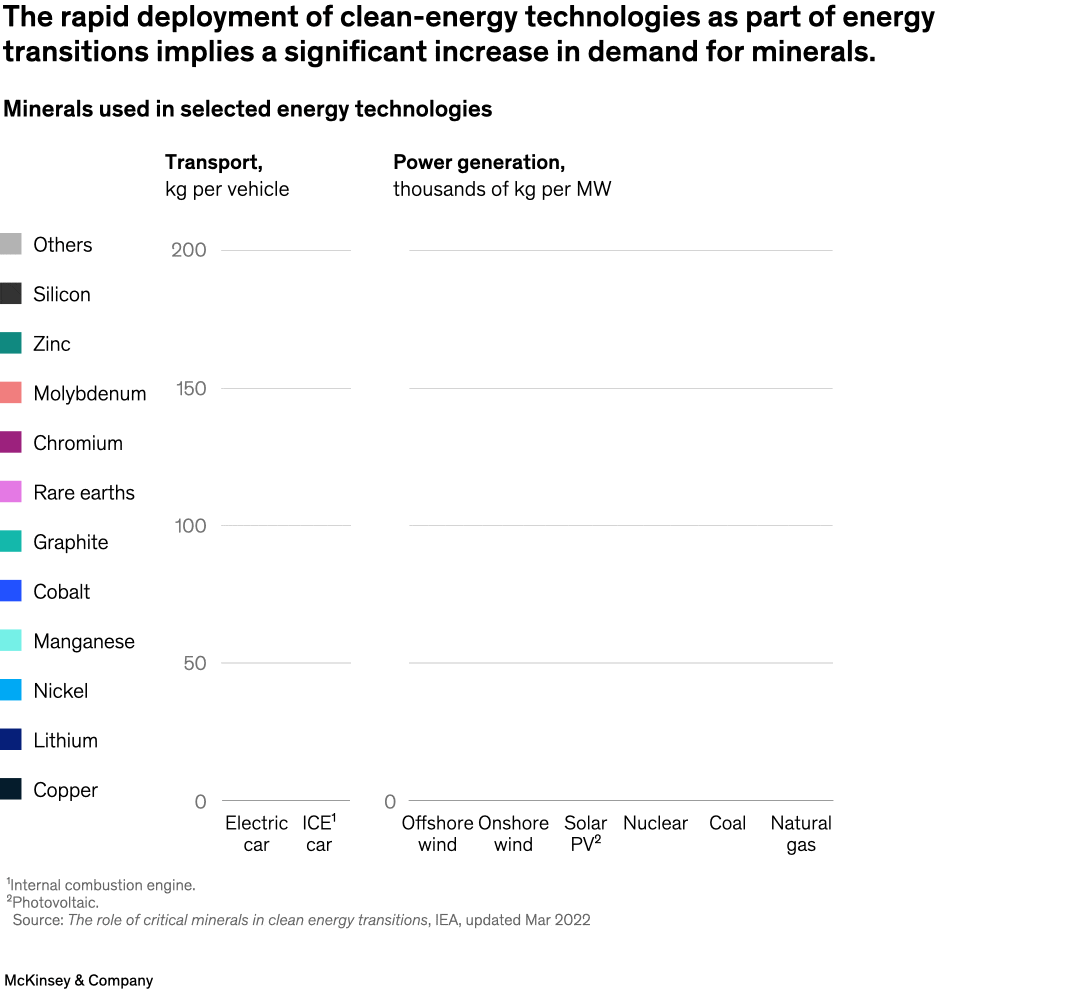Achieving net-zero emissions by 2050 will require a transition to cleaner energy sources. Metals and minerals will be in greater demand since low-carbon technologies often require more of these materials than conventional energy sources, partner Roland Rechtsteiner and coauthors note. For instance, by 2030, battery electric vehicles and the charging infrastructures they rely upon will consume as much as 50 percent of rare earth elements, 55 percent of cobalt, and 36 percent of nickel.

Image description:
A pair of segmented bar graphs represent minerals used in selected energy technologies. The first bar graph focuses on transport and the difference between an electric car, at >200 kg per vehicle, and an internal combustion engine car, at ~35 kg per vehicle. The second graph looks at minerals used in different types of power generation, measured in thousands of kg per megawatt. They are, from highest to lowest: offshore wind, ~15,000; onshore wind, ~10,000; solar photovoltaic panels, ~7,000; nuclear, ~5,000–6,000; coal, ~2,000; and natural gas, ~ 1,000.
Source: The role of critical minerals in clean energy transition, IEA, updated Mar 2022.
End of image description.
To read the article, see “The trading opportunity that could create resilience in materials,” September 26, 2023.